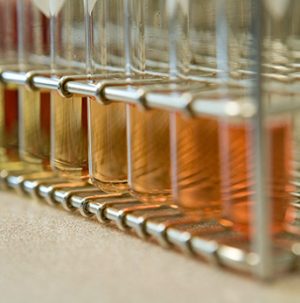Why Should You Assess Hemocompatibility?
Medical devices that contact circulating blood generally require a hemocompatibility assessment and, we offer multiple types of test depending on your product and data needs. These include Hemolysis (Material and Mechanically Induced), PTT, Complement Activation and In Vivo Thrombogenicity. Our testing is done in compliance with criteria from:
- ISO 10993-4
- ASTM F756
Download the biocompatibility test matrix. [Based on ISO 10993-1 and FDA “Use of international standard ISO 10993-1”]
What Testing Does Nelson Labs Perform for Hemocompatibility?
Hemolysis Test
The Hemolysis test is designed to determine the hemolytic properties of a medical device materials that have direct or indirect blood contact and fulfills hematological testing requirements for selection of tests for interactions with blood. Nelson Labs tests with fresh human blood rather than rabbit blood. Nelson Labs offers test systems which evaluate both biochemical factors (Material-Induced Hemolysis) and mechanical forces (Mechanically-Induced Hemolysis.)
PTT Test
The Partial Thromboplastin Time (PTT) test is a general screening test for the detection of coagulation abnormalities in the intrinsic pathway. This test is performed on medical device materials that have direct contact with circulating blood.
Complement Activation
The Complement Activation test is used to determine the potential for activation of the complement system by a medical device. This humoral immune response may be caused by the introduction of a foreign material into the body and can lead to adverse effects such as inflammation and tissue damage. This test was designed to fulfill the immunology testing requirement for selection of tests for interactions with blood. Nelson Labs includes the evaluation of SC5b-9 production at time points in the assay to look at possible levels of activation over time.
In Vivo Thrombogenicity Test
The In Vivo Thrombogenicity test determines a comparative thrombo-resistant for medical devices that are intended for blood contact. This test enables manufacturers to see if the medical devices cause any potentially undesirable effects on humans, such as activation of platelets, formation of a thrombus, embolism, or injury to cells.



